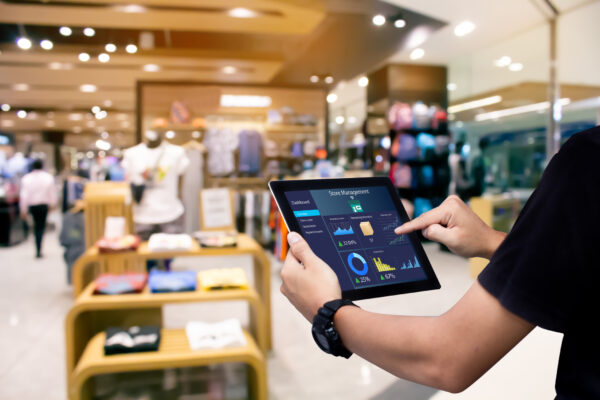The National Retail Federation (NRF) event, held annually in January, is the retail industry’s premier conference, bringing together global retailers, tech innovators, and thought leaders to explore the latest strategies and technologies shaping the future of commerce. It’s seen as the central point of trends and market movement for the retail industry.
The current global retail market size is $30 billion, growing at 9% annually and is expected to reach $37.8 billion in 2027, which is influencing a number of trends that emerged at this year’s event. Here are our four key takeaways from NRF 2025.
- Adtech & Martech for Customized Experiences: These technologies are enabling more targeted, personalized customer engagement strategies in the retail industry. Scaling ads based on demographics, market segmentation, and product market capitalization enables customers to engage with hyper-relevant content across platforms. Customization is now defining growth and retention as customers demand a more personalized approach that doesn’t make them feel pressure to make a purchase.
- More Investment in Supply Chain Innovations: Supply chain technology is helping the retail industry reduce costs and enhance efficiencies across the board. For example, the use of AI tracking/tracing input materials coupled with predictive analytics overall is decreasing product lead time and increasing availability. Feedback from companies offering these solutions indicate that while their solutions are growing in sophistication, the largest bottleneck is the nature of the logistical system in the US. As companies continue to diversify their supply chains, the number of RFID type solutions also continues to grow. These solutions provide real-time visibility into the supply chain workflow and are becoming increasingly cost competitive.
- Loss Prevention Still a Priority: Many companies continue to stress peripherals with solutions that prevent self-checkout related theft. These technologies have embedded cameras and identity detection technology (front end and back end), while product scanning has advanced with augmented reality technology. It’s able to connect UPC codes to corresponding fabric/boxes/shapes to avoid scanning misrepresentation and errors. Several companies also showcased advanced optics that could analyze human behavior while tracking items being taken off of shelves, only to become hidden from sight altogether.
- AI is All Around: AI is being utilized across the retail tech stack to improve the customer experience and increase enterprise efficiencies in a variety of ways including:
- Writing detailed, SEO-optimized product descriptions
- Creating restocking alerts to minimize stockouts and overstocking
- Streamlining returns processing, reducing manual effort and turnaround times
- Predictive and behavioral analysis helping define deeper customer trends
- Utilizing complex data streams for client tracking
- Curating in-store innovations with cashier-less stores for checkout-free experiences and smart shelves that provide real-time updates to staff
For 2025, it’s clear that staying ahead in retail requires a commitment to adaptability and customer-centric strategies. These key takeaways reinforce the importance of leveraging and investing in emerging technology for enhanced customer experiences and optimized operations across the retail enterprise.
Want to learn more? Let’s talk.

QA in the Age of AI: The Rise of AI-Powered Quality Intelligence
As organizations push code to production faster, respond rapidly to new customer needs and build adaptive systems, the expectations on quality have changed. It's no longer enough to simply catch bugs at the end of the cycle. We’re entering an era where quality engineering must evolve into quality intelligence and organizations adopting quality intelligence practices are reporting measurable gains across key delivery metrics. Learn more in this article by Principal Engineer Jarius Hayes.

Operational Efficiency in the AI Era: What Matters and What Works
Ever wonder how leading teams are cutting costs without cutting corners? Hint: it starts with AI. In this article by Principal Delivery Manager Kabir Chugh, learn how AI is powering smarter ops, faster deployments, and measurable savings across industries.

The Hidden Powerhouse for Industry Disruption
Mid-market companies are quietly outpacing larger competitors, not with massive budgets, but with speed, focus, and real-world results. In our latest article by Senior Director of Solutions Consulting, Josh Scott, he breaks down how mid-market companies are using AI and cloud tools to solve real problems, move faster than the competition, and rewrite the rules of their industries. Forget tech for tech’s sake — it’s about execution that actually delivers.

Analysis Paralysis in AI Adoption
Learn why endless discussions and the relentless pursuit of flawless data are actually costing you valuable time, insights, and competitive advantage – just like it did for giants like Kodak and Blockbuster.
